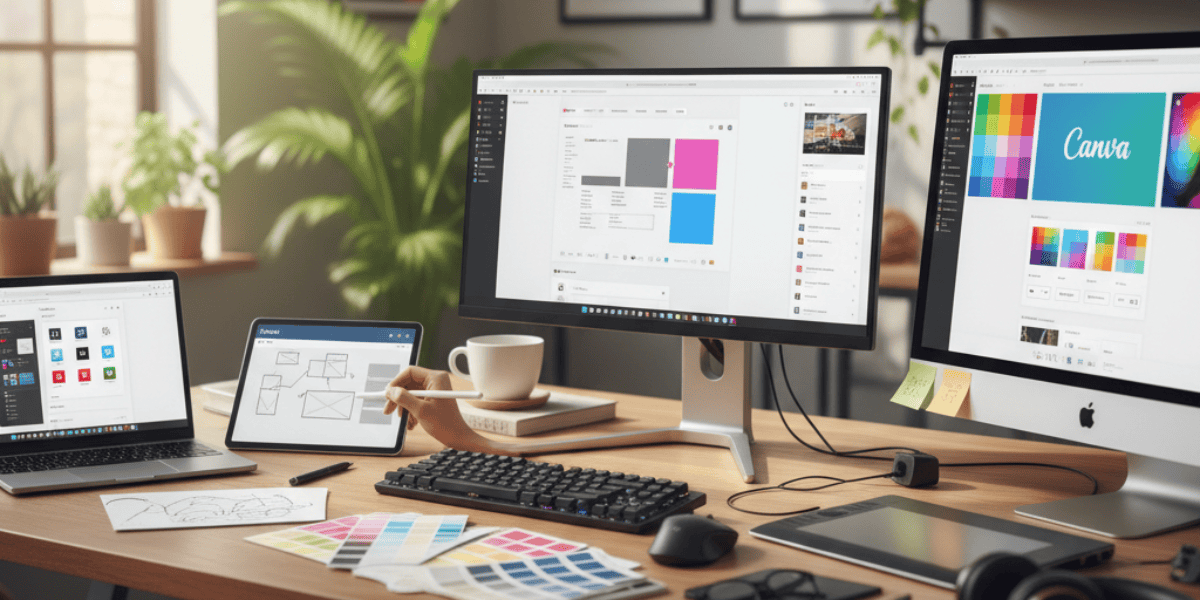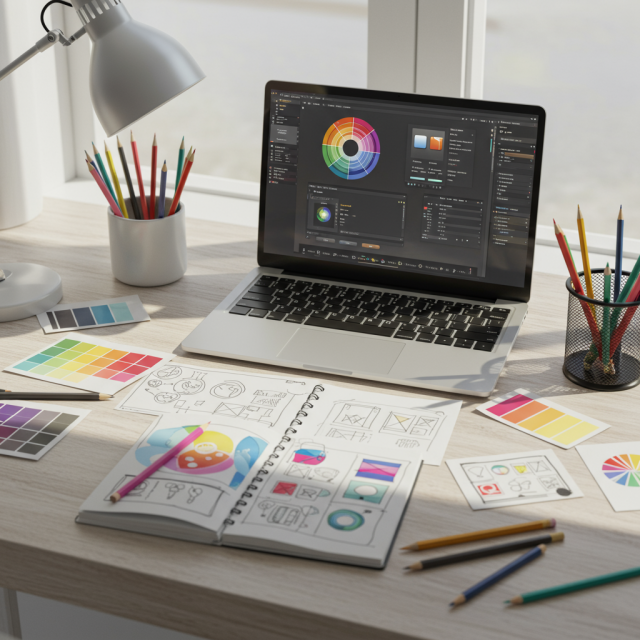In today’s fast-paced digital world, creative design is more than just aesthetics—it’s a powerful way to communicate ideas, solve problems, and make memorable impressions. Whether you’re a budding designer learning the ropes or an experienced professional seeking fresh perspectives, understanding the core concepts and nurturing your creativity are essential for success. In this comprehensive guide, we’ll explore what creative design truly means, outline the fundamental principles, introduce must-have tools and techniques, and share tips on finding endless inspiration. By the end, you’ll have a clear roadmap to elevate your design projects and stand out in a crowded marketplace.
What Is Creative Design?
At its core, creative design is the practice of crafting visual solutions that effectively convey messages and evoke emotions. It spans multiple disciplines—from graphic and web design to product and environmental design. Unlike purely decorative art, creative design combines aesthetics with purpose: each color choice, shape, and layout serves to guide the viewer’s attention and enhance usability. It’s the intersection of imagination, empathy, and strategy.
Core Principles of Creative Design
Great designs rest on a foundation of time-tested principles. Familiarizing yourself with these concepts will help you create balanced, impactful work every time.
- Balance: Distribute visual weight evenly across your layout, using symmetry or asymmetry to create stability.
- Contrast: Employ opposing elements (light vs. dark, thick vs. thin) to make key components stand out.
- Emphasis: Guide the viewer’s eye to the most important element, such as a headline or call-to-action.
- Movement: Use lines, shapes, and composition to lead the viewer through the design in a deliberate sequence.
- Proportion: Ensure elements relate harmoniously in size and scale, creating a sense of unity.
- Rhythm: Repeat visual motifs or spacing patterns to establish consistency and flow.
Essential Tools for Creative Designers
From software to hardware, having the right tools can streamline your workflow and unlock new possibilities.

Digital Software
- Adobe Creative Cloud: Industry-standard apps like Photoshop, Illustrator, and InDesign for raster, vector, and layout work.
- Figma: Collaborative interface design tool ideal for web and app prototyping.
- Sketch: A user-friendly vector design app popular among UI/UX designers on macOS.
- Canva: Web-based platform offering templates and drag-and-drop simplicity for quick graphics.
Hardware & Accessories
- Graphics Tablet: Wacom or XP-Pen tablets for precise digital illustration and retouching.
- High-Resolution Monitor: Accurate color reproduction and ample screen real estate boost productivity.
- Sketchbooks & Pens: Analog tools remain invaluable for brainstorming and quick mockups.
Techniques to Spark Your Creativity
Creativity isn’t a finite resource—you can cultivate and expand it with targeted practices.
Brainstorming & Mind Mapping
Begin projects by jotting down every idea, no matter how wild. Use mind mapping to connect concepts visually, uncovering unexpected relationships and novel solutions.
Mood Boards
Curate a collection of colors, textures, typography samples, and imagery that capture the tone you want. A mood board offers a clear visual reference and prevents design drift.
Iterative Sketching
Rapidly sketch multiple versions of a layout to explore different compositions. Early on, embrace rough drafts and focus on volume over perfection.
Finding Inspiration Everywhere
Inspiration can strike from unexpected sources. Train yourself to observe and record ideas whenever you encounter them.
Nature & Architecture
The world around us is full of shapes, color combinations, and patterns. A walk in the park or through a historic building can reveal harmonious rhythms and textures worth emulating.
Online Communities
Platforms like Behance, Dribbble, and Pinterest showcase cutting-edge work from global designers. Bookmark compelling pieces and analyze what makes them effective.
Cross-Disciplinary Exploration
Delve into photography, sculpture, fashion, or even culinary arts. Cross-pollination between fields often yields fresh perspectives.
Building an Efficient Design Workflow
A well-defined process keeps you organized, minimizes revisions, and ensures consistent quality.
- Research: Gather client requirements, audience insights, and competitive analysis.
- Ideation: Generate concepts through brainstorming, mood boards, and sketches.
- Design Refinement: Translate selected sketches into digital mockups, focusing on typography, color, and layout.
- Feedback Cycles: Share prototypes with stakeholders, gather critiques, and iterate.
- Finalization: Polish all elements, prepare production-ready files, and ensure brand consistency.
Case Study: A Real-World Creative Design Project
Let’s examine how these principles and workflows come together in practice. A local coffee shop commissioned a new brand identity to stand out in a crowded market. The designer started with customer surveys to understand the desired ambiance—cozy, modern, and approachable. A mood board featured warm, earthy tones, hand-drawn illustrations of coffee beans, and minimalist typography. Through iterative sketching, several logo concepts emerged. After client feedback, the final logo combined a stylized bean icon with a clean sans-serif wordmark. The designer then extended the palette to packaging, menus, and social-media templates, ensuring each touchpoint felt cohesive. By following a structured process and leaning on core design principles, the project launched on time and received rave reviews from patrons.
Tips for Continuous Growth in Creative Design
Design is an ever-evolving field. Stay ahead by:
- Learning New Tools: Experiment with emerging software like Procreate or Blender for 3D design.
- Attending Workshops: In-person or virtual classes help you master niche skills and network.
- Soliciting Critique: Join design critique groups to receive constructive feedback and refine your eye.
- Tracking Trends: Follow industry blogs and award shows to spot rising styles and technologies.
Conclusion and Next Steps
Creative design blends art and strategy to solve problems and engage audiences. By mastering foundational principles, leveraging powerful tools, and nurturing your creative process, you can produce work that resonates and stands the test of time. Start small: choose one principle or technique to practice today, and gradually build your skills through real-world projects. Whether you aspire to freelance, join an agency, or launch your own creative studio, this guide provides the roadmap to thrive in the dynamic world of design. Embrace experimentation, stay curious, and keep creating!
Learn more about: Unleashing Innovation: 10 Cutting-Edge Creative Design Strategies for Engaging Visuals









